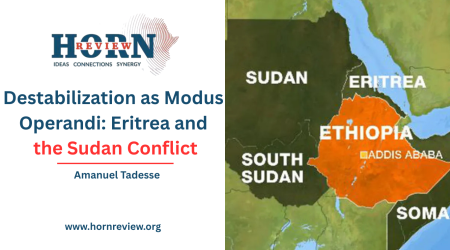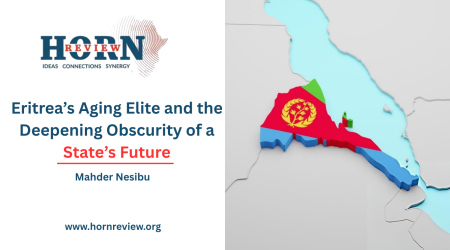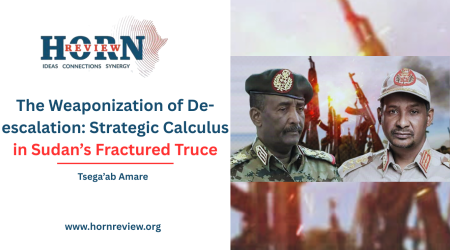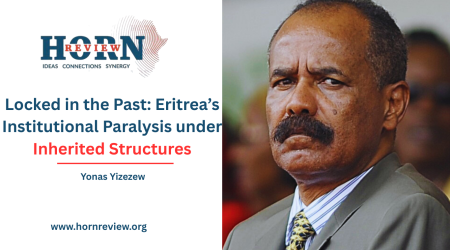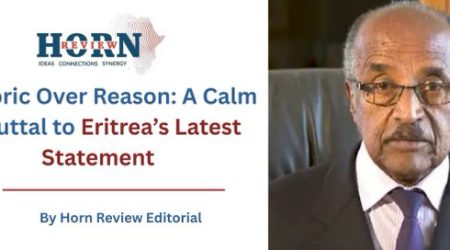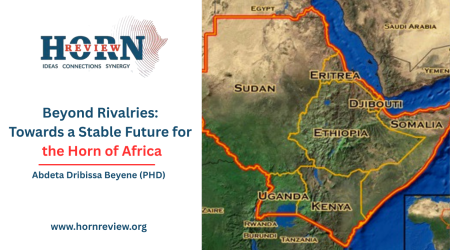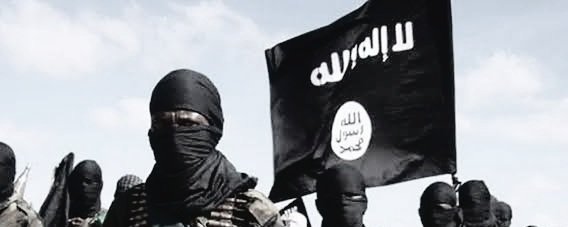
17
Apr
Somalia’s Struggle for Stability: Al-Shabab’s Evolution & Resurgence, and the Regional Imperative
The post–Siad Barre era in Somalia have been defined by chaos, conflict, and the rapid evolution of militant groups that would irrevocably shape the country’s political dynamics. After the fall of Siad Barre in 1991, Somalia descended into a state of lawlessness as centralized governance disintegrated overnight. The dictatorial rule of Barre was replaced by a patchwork of warlordism, with rival factions and shifting alliances emerging almost immediately. The United Somali Congress (USC), which had played a key role in toppling Barre, split into rival factions in the same year. Other rebel groups, such as the Somali Patriotic Movement (SPM), turned against the USC, plunging the country into a maelstrom of violence and instability.Multiple armed groups led by prominent warlords operated across Somalia, with the capital, Mogadishu, becoming a battleground. Prominent figures like Ali Mahdi Muhammad and Mohamed Farrah Aidid, who had emerged from the USC and allied factions, clashed for control of the city.
Amid this pervasive chaos, a number of local Islamic Courts began to emerge. Initially decentralized and limited in scope, these courts sought to restore order and deliver a semblance of justice based on Sharia law. They focused on resolving everyday disputes and addressing common criminal issues at the community level, offering an alternative to the pervasive warlordism. Simultaneously, numerous organizations and warlords engaged in an unrelenting struggle for power, complicating any efforts to restore national cohesion. By April 1992, the United Nations recognized the growing humanitarian catastrophe and deployed a mission to Somalia. The UN operations, collectively known as UNOSOM, spanned four years and were intended to stabilize the situation and deliver humanitarian relief.
However, these missions were largely confined to Mogadishu and failed to secure a lasting ceasefire or meaningful order amid the deeply entrenched factionalism. In an effort to address the security vacuum, the United States spearheaded the Unified Task Force (UNITAF), deploying around 25,000 military personnel to restore stability. Despite early tactical engagements, UNITAF struggled to establish order and encountered fierce resistance from entrenched warlord factions, particularly from figures like Aidid.Throughout this period, the civil war persisted and further eroded any prospects for centralized control. As the conflict raged on, the emergence of the Islamic Courts began to capture the attention of many Somalis, who longed for order and justice in a society ravaged by chaos. By addressing local grievances through the implementation of Sharia-based justice and community mediation, the courts slowly began to supplant the authority of the traditional warlord factions. Their decentralized model evolved into a more coordinated effort, culminating in the formation of the Islamic Courts Council (ICC) around the year 2000. This unification represented not only a consolidation of the various local courts but also an attempt to establish a semblance of governance and accountability in a country where lawlessness had long reigned.During this transformative period, the Transitional National Government (TNG) emerged as an attempt to re-establish centralized authority in Somalia.
Tasked with the formidable challenge of uniting a nation fractured by decades of conflict, the TNG’s legitimacy was perennially undermined by the pervasive influence of warlords and the rising popularity of the Islamic Courts. The TNG’s efforts to restore order were complicated by a complex interplay of local loyalties, clan dynamics, and the lingering resentment towards international interventions that had failed to deliver lasting peace.Against this turbulent backdrop, the global geopolitical landscape began to shift. Under President George W. Bush, the United States launched a de facto war on terror with an agenda that sought to eliminate any threat associated with radical Islamism—a campaign that was spurred by the events of 9/11. By 2003, the CIA had initiated covert operations designed to undermine the influence of the Islamic Courts, viewing them as a potential haven for extremist ideologies. In 2005, alarmed by the growing influence of the ICU, the United States organized and backed a warlord alliance known as the Alliance for the Restoration of Peace and Counter-Terrorism.
This alliance was tasked with an offensive against the ICU; however, the initiative ultimately backfired. The widespread popular support for the ICU enabled it to defeat the alliance, further consolidating its position within Somalia.Following this unexpected victory, the ICU gradually consolidated its power base and expanded its control over large swathes of Somalia. As the ICU extended its influence, neighbouring Ethiopia grew increasingly concerned about the potential spill over of radical Islamist ideologies and the possibility of a terror haven on its borders. The ICU’s strict implementation of Sharia law and its perceived links to transnational militant movements prompted Ethiopian security and intelligence agencies to view the situation as a direct threat to regional stability.
Consequently, by early 2006, the Ethiopian government began constructing a buffer zone along its border with Somalia, a move intended to pre-empt any further destabilizing effects.In December 2006, tensions reached a boiling point, and Ethiopia launched a full-scale military intervention in Somalia. The Ethiopian government justified its intervention as a necessary measure to forestall the spread of an increasingly radicalized Somalia and to protect its national security interests. In the initial phase of the conflict, Ethiopian forces scored several tactical victories against the ICU. They seized strategic positions in Mogadishu and temporarily disrupted the ICU’s administrative control. However, these early successes proved unsustainable in the face of a deeply complex insurgency and the resilient local allegiances that underpinned the ICU’s support base.As the Ethiopian forces became mired in protracted guerrilla warfare, logistical challenges, and mounting local resistance, the sustainability of their intervention came into question. Gradually, the Ethiopian government began to re-evaluate its strategy.
Recognizing the high costs and persistent difficulties of maintaining a large-scale military presence in an unstable Somalia, Ethiopian troops were gradually withdrawn in a carefully orchestrated pullback designed to preserve national security and limit further casualties. This withdrawal, however, left behind a significant security vacuum that rival factions and insurgent groups were quick to exploit.In the power vacuum that emerged following Ethiopia’s retrenchment, a radical offshoot of the ICU coalesced into a new militant entity that would soon be known as al-Shabab. Exploiting widespread disillusionment with both the Transitional National Government and the persistent warlord factions, al-Shabab rapidly consolidated support among communities desperate for order and clear ideological direction. The group presented itself as the sole defender of Somali values and religious purity, tapping into a deep reservoir of resentment over years of state failure and foreign intervention.Over time, al-Shabab evolved from a fragmented insurgent offshoot into a formidable militant organization with ambitions to seize control of Somalia.
As it stands, al-Shabab is an ever-growing threat, with the Federal Government on the brink of losing Mogadishu to the terrorist organization.In its early years, the group had relied on hit-and-run guerrilla tactics against government forces and African Union peacekeepers. However, with the recent shifts in the Somali security landscape, al-Shabab has adapted its strategies by embracing large-scale, coordinated assaults aimed at both seizing and holding territory. One innovative tactic that is emerging is its practice of capturing weapons from prisoners of war and bolstering its conventional warfare capabilities. This strategy is not only enhancing its fighting capabilities but diminishing the manpower and moral of the Somali National Army (SNA)The evolving nature of al-Shabab’s tactics—from reliance on suicide missions in urban centres like Mogadishu to the adoption of more conventional military strategies—has further underscored the need for a recalibrated response. The militant group’s estimated force of around 25,000 troops today is indicative of its transformation from a rudimentary insurgency into a well-armed and organized force capable of sustained military campaigns.
The Somali National Army, tasked with countering the al-Shabab insurgency, has long struggled with chronic organizational weaknesses and frequent shifts in federal and military leadership. These deficiencies are increasingly making the SNA ill-equipped to counter the modernized tactics of al-Shabab. Further compounding the problem is the persistent underestimation of al-Shabab’s true capabilities by the Somali Federal Government. For instance, President Hassan Sheikh Mohamud has maintained an optimistic public stance regarding the eventual defeat of the insurgents—a position that often clashes with the harsh realities observed on the ground. Recently, HSM himself witnessed the growing boldness of the group after his convoy was attacked by al-Shabab in Mogadishu. Meanwhile, the current African Union mission, though designed as a bulwark against further destabilization, has largely assumed a role of maintaining a security buffer in key urban centres rather than posing as a legitimate deterring body against al-Shabab.
A critical shortcoming in the regional security framework has been the lack of coordination between the African Union Mission in Somalia (ATMIS) and the Somali National Army. ATMIS’s limited mandate and focus on maintaining security in safe zones has left significant gaps in other areas, creating opportunities for al-Shabab to regroup and expand its operations. The disjointed efforts between ATMIS and the SNA have resulted in a reactive rather than proactive security strategy—a situation that al-Shabab has adeptly exploited. With the current AU mission winding down and AUSSOM taking shape as its successor, the reported limited Ethiopian involvement within AUSSOM leaves the new mission in a much more disabled and limited apparatus than its predecessor. It must be recognized that the diminishing Ethiopian engagement in the new AU mission is having destabilizing effect. Ethiopia’s intervention in 2006 was instrumental in curtailing the rapid expansion of the ICU, but the later pullback inadvertently provided al-Shabab with the space it needed to regroup. As if history is repeating itself, the limiting of Ethiopian troops under the AU mission flag is also having a detrimental effect.
To reverse the tide, a coordinated, robust response is urgently needed—one that not only addresses the internal structural weaknesses of the Somali state but also leverages the strengths of regional actors, including Ethiopia. Ethiopia, with its strategic interest in regional security and its historical involvement in Somalia, must now play a more central role in the collective security framework. Ethiopia’s revitalized engagement could take several forms. First, it could contribute direct military support and specialized counterinsurgency training to the Somali National Army. Second, Ethiopia could serve as a strategic partner in intelligence-sharing and logistical coordination among regional forces. This multifaceted involvement would not only help bridge the current gaps in coordination between ATMIS and the SNA but also serve to reassert a level of regional stability that has been sorely lacking in recent years. Furthermore, Ethiopia’s participation in a unified regional coalition would underscore a shared commitment among Horn of Africa nations to counter the transnational threat posed by al-Shabab—a commitment that is essential for long-term peace and stability.By addressing the gaps left by previous interventions and reintegrating Ethiopia into the security framework—now through enhanced involvement in AUSSOM—Somalia can begin to reverse the trend of increasing militancy and state fragility.
The path forward will undoubtedly be fraught with challenges, but a unified approach that leverages the strengths of regional partners and international allies represents the most viable route toward achieving lasting stability. The transformation of Somalia’s security landscape—from one dominated by lawlessness and factional strife to one defined by coordinated, strategic counterinsurgency—depends on the willingness of all stakeholders to commit to a comprehensive and integrated solution.The dynamics at play in Somalia today are complex and multifaceted, reflecting decades of internal strife, external interventions, and evolving militant strategies. Acknowledging these complexities, while integrating the contributions of key regional players such as Ethiopia, is critical to developing a coherent and effective response. The solution lies not in isolated military campaigns or piecemeal diplomatic efforts, but in a comprehensive strategy that unites all stakeholders in a common objective: the restoration of order, the rebuilding of state institutions, and the establishment of a secure, stable Somalia that can chart its own destiny amidst the turbulent currents of regional politics.
By Horn Review Editorial

